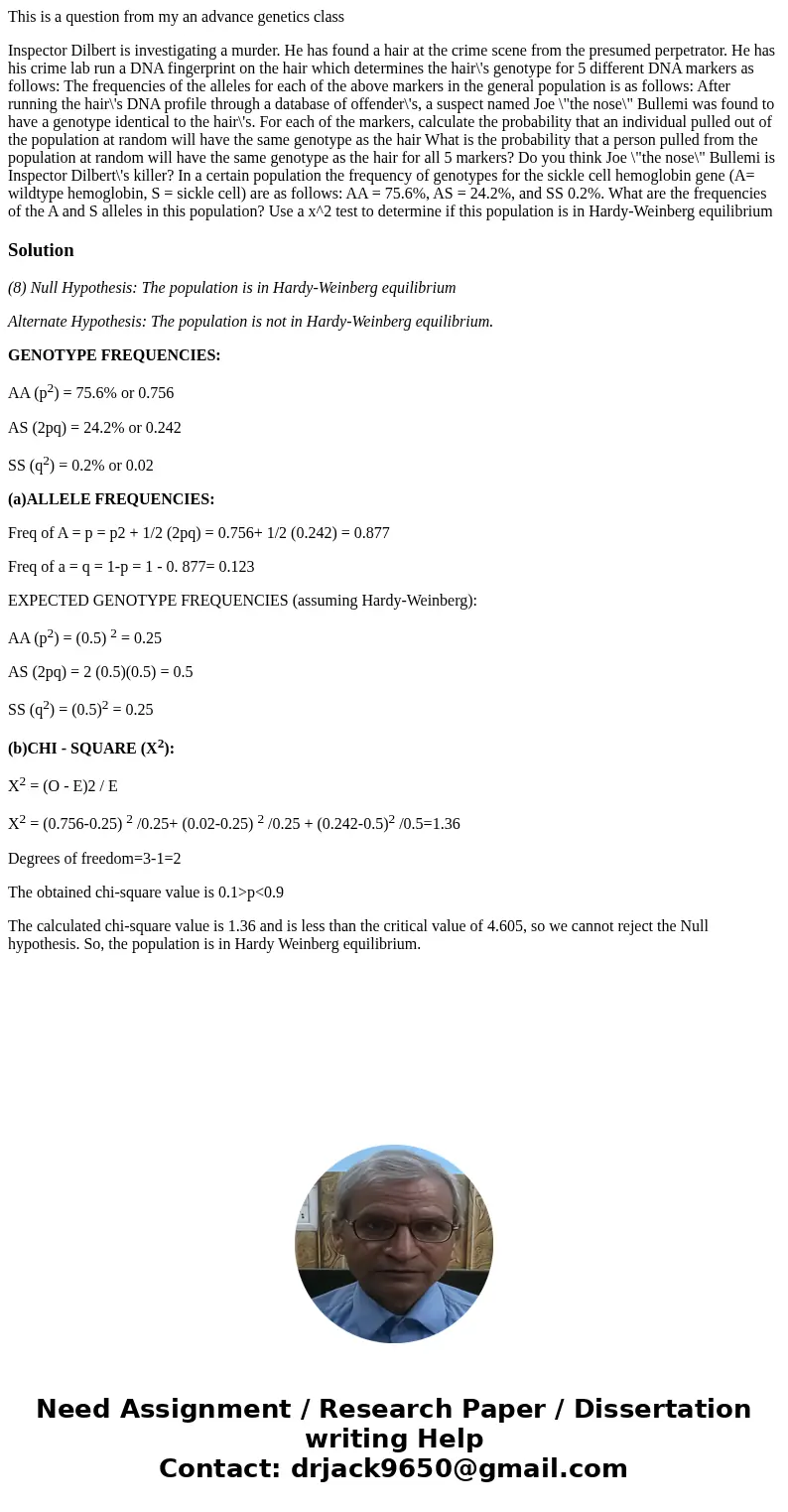This is a question from my an advance genetics class Inspect
This is a question from my an advance genetics class
Inspector Dilbert is investigating a murder. He has found a hair at the crime scene from the presumed perpetrator. He has his crime lab run a DNA fingerprint on the hair which determines the hair\'s genotype for 5 different DNA markers as follows: The frequencies of the alleles for each of the above markers in the general population is as follows: After running the hair\'s DNA profile through a database of offender\'s, a suspect named Joe \"the nose\" Bullemi was found to have a genotype identical to the hair\'s. For each of the markers, calculate the probability that an individual pulled out of the population at random will have the same genotype as the hair What is the probability that a person pulled from the population at random will have the same genotype as the hair for all 5 markers? Do you think Joe \"the nose\" Bullemi is Inspector Dilbert\'s killer? In a certain population the frequency of genotypes for the sickle cell hemoglobin gene (A= wildtype hemoglobin, S = sickle cell) are as follows: AA = 75.6%, AS = 24.2%, and SS 0.2%. What are the frequencies of the A and S alleles in this population? Use a x^2 test to determine if this population is in Hardy-Weinberg equilibriumSolution
(8) Null Hypothesis: The population is in Hardy-Weinberg equilibrium
Alternate Hypothesis: The population is not in Hardy-Weinberg equilibrium.
GENOTYPE FREQUENCIES:
AA (p2) = 75.6% or 0.756
AS (2pq) = 24.2% or 0.242
SS (q2) = 0.2% or 0.02
(a)ALLELE FREQUENCIES:
Freq of A = p = p2 + 1/2 (2pq) = 0.756+ 1/2 (0.242) = 0.877
Freq of a = q = 1-p = 1 - 0. 877= 0.123
EXPECTED GENOTYPE FREQUENCIES (assuming Hardy-Weinberg):
AA (p2) = (0.5) 2 = 0.25
AS (2pq) = 2 (0.5)(0.5) = 0.5
SS (q2) = (0.5)2 = 0.25
(b)CHI - SQUARE (X2):
X2 = (O - E)2 / E
X2 = (0.756-0.25) 2 /0.25+ (0.02-0.25) 2 /0.25 + (0.242-0.5)2 /0.5=1.36
Degrees of freedom=3-1=2
The obtained chi-square value is 0.1>p<0.9
The calculated chi-square value is 1.36 and is less than the critical value of 4.605, so we cannot reject the Null hypothesis. So, the population is in Hardy Weinberg equilibrium.

 Homework Sourse
Homework Sourse